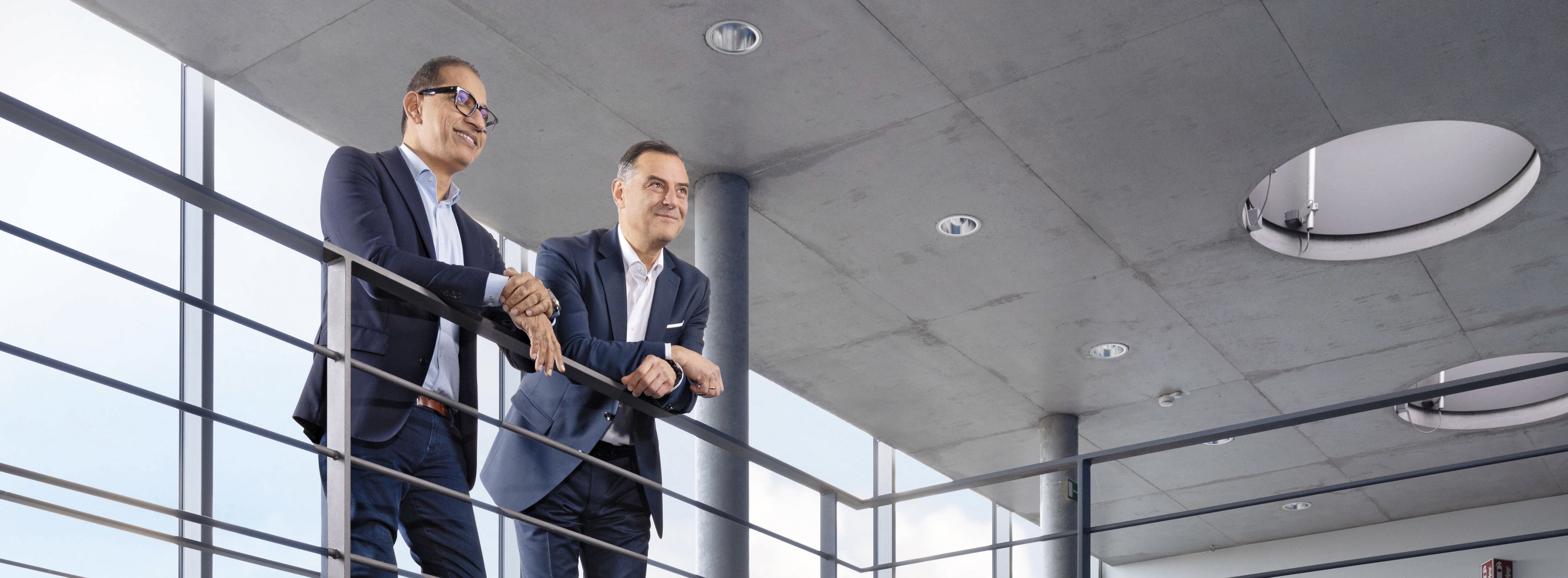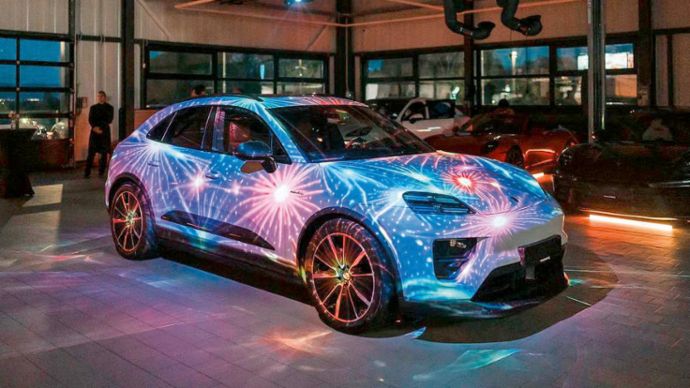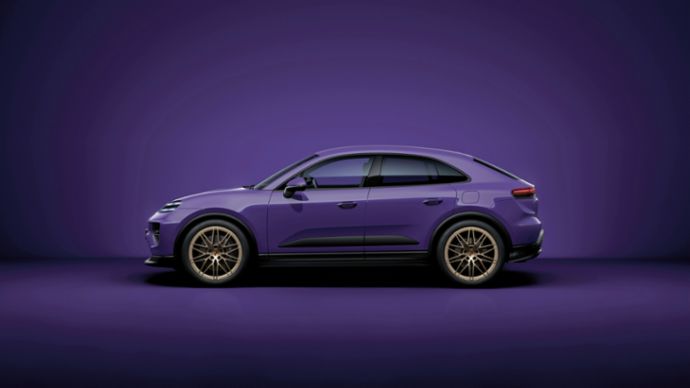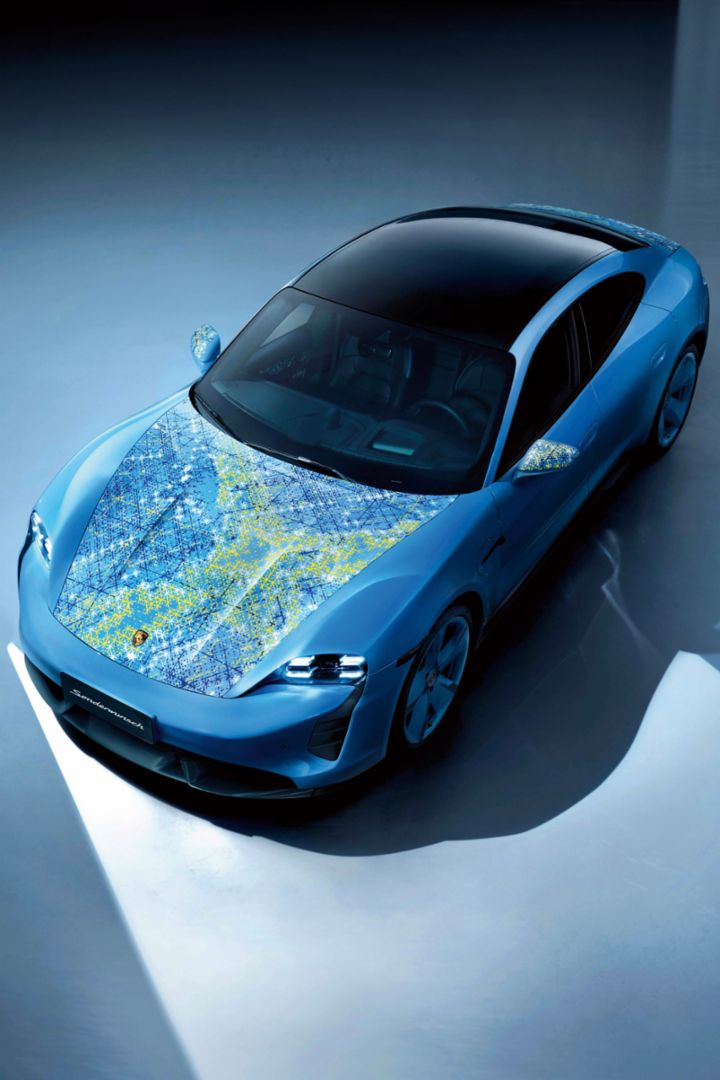Two Executive Board Members, One Vision
Jointly developing the Porsche sports car of the future while preserving its fascination and uniqueness is what it’s all about for Member of the Executive Board responsible for Development Michael Steiner and Member of the Executive Board responsible for Car IT Sajjad Khan. They speak to Christophorus about the opportunities offered by digitalization, changing customer needs, and the advantages of shared office space.
Mr. Steiner, Mr. Khan, Porsche has created Car IT as an additional Executive Board division. Why was this step necessary and wise?
Michael Steiner: The reasons lie in digitalization, which is changing the entire industry. Software and IT systems are integral parts of modern vehicles. The days when programming single control units was enough are long since gone. These days, a great many control and assistance systems interact with one another in a vehicle, and communication with the outside world is becoming more and more important, too. We are heading in the direction of a smart vehicle.
Sajjad Khan: To draw an analogy with the human body, software and data connections are the blood and the blood vessels. They supply the entire organism. But like the body, the car does not consist solely of software. It also needs hardware. This embodies our classic virtues, which have always made our sports cars so fascinating. We will continue to develop these in the future, too.
According to Porsche Chairman of the Executive Board Oliver Blume, the automotive industry is currently undergoing its biggest ever transformation. What challenges does this present?
Steiner: We responded early on and are actively playing a part in shaping this transformation. Electric mobility calls for major investments and is resulting in far-reaching changes, especially in the traditional world of combustion engines. Then there are also new topics like electrochemistry and high-voltage electronics. As an overarching topic, digitalization affects virtually every area.
Khan: It is even changing people’s way of life – something our customers are experiencing themselves on a daily basis. Home appliances are now incorporated into the Internet of Things, a network which will effectively be all-encompassing. This is the direction in which things are headed, including for cars. But this network still creates sensory impressions on the basis of design, performance, and dynamics.
Are the vehicle development priorities changing? In other words, is there a development away from steel and mechanics toward software and high-end electronics?
Steiner: A Porsche will still drive like a Porsche in the future. The precision with which our sports cars respond to steering and braking commands is a key distinguishing feature. We are now complementing the traditional driving dynamics virtues with digital possibilities. This means we can now realize vehicle functions on the basis of digital solutions instead of hardware, as was once primarily the case. This makes our development work more efficient as there’s no need to develop almost every part anew for each new generation. Another advantage is that we can still make necessary or desirable modifications even after a model has been rolled out, by means of updates.
Khan: We don’t see hardware and software as opposites. The traditional mechanics and the digital systems need to engage with one another in such a way that the quality and innovation continue to impress the customers. These days, the customer expects to acquire new features even after they have bought a car. This relates not only to the vehicle systems, but also to the entire environment which, for us, additionally comprises vehicle connectivity including cloud connection and the use of apps such as My Porsche.
“We don’t see hardware and software as opposites.”
Sajjad Khan
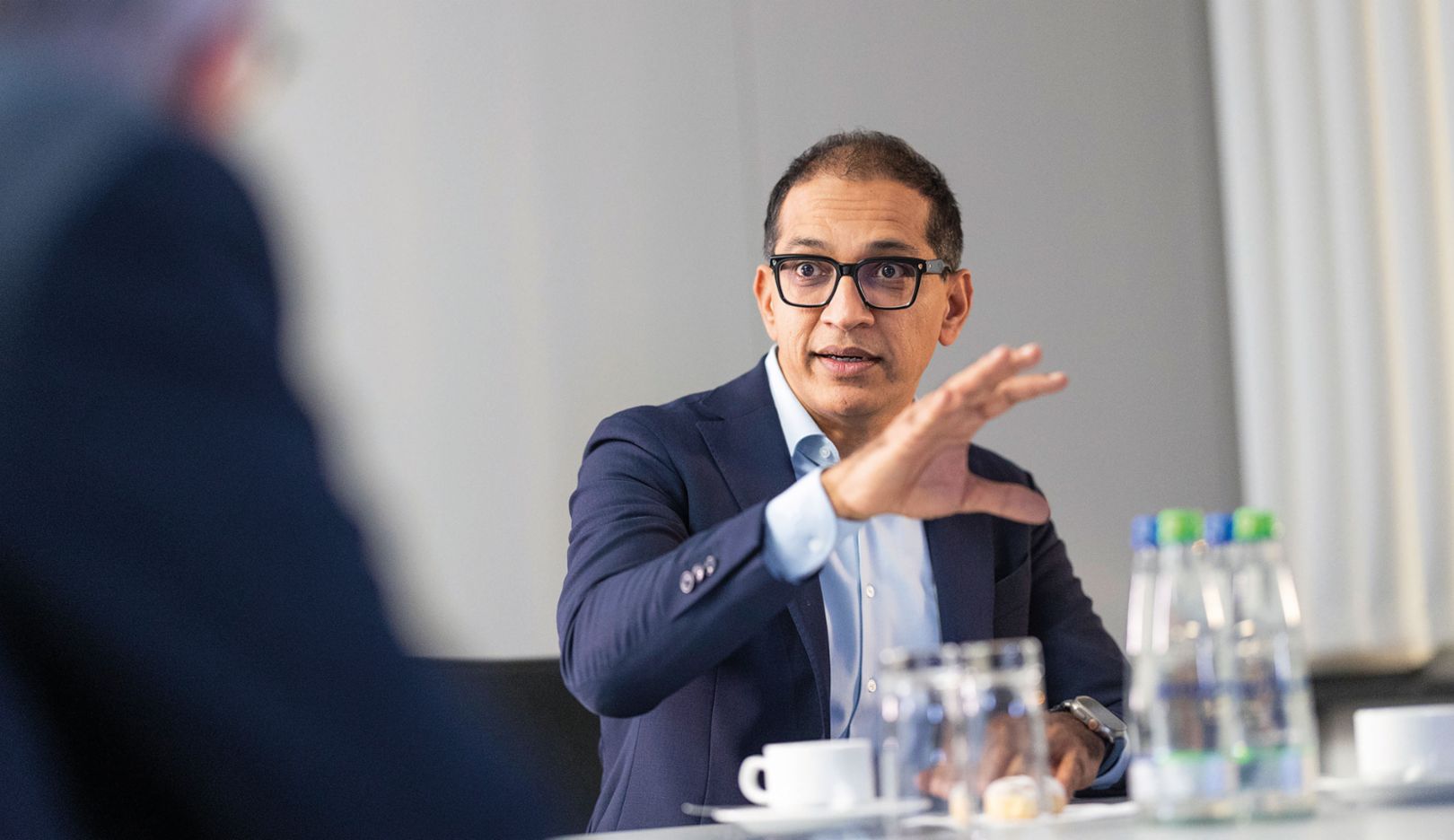
Sajjad Khan
has been a Member of the Porsche AG Executive Board since November 2023. The digital expert heads the newly created Car IT division and is responsible in particular for the topics of connectivity and infotainment.Are the customers’ expectations changing regarding the performance and user convenience of digital systems?
Steiner: There is a clear trend here. Functions that nobody had even thought of 10 or even 20 years ago are now considered self-evident. The smartphone has proved to be a game changer as it has radically changed people’s everyday habits and therefore also all the topics relating to mobility. The customers expect using the functions in a car to be as intuitive and as convenient as using their mobile devices.
Khan: The expectations grow together with the technical possibilities. This applies to mobile entertainment offerings, too. These days, front-seat passengers and those in the back of the car perhaps want to use streaming services and watch videos. Or someone may want to use their vehicle as a mobile office and take part in a videoconference without the connection continuously being interrupted. The connected vehicle is increasingly evolving into a communications hub.
Are there different market requirements around the world in this area, and how is Porsche adapting to these?
Khan: There are some considerable differences in our customers’ needs in the individual markets. Being active as a global brand, we have to ensure that the various digital ecosystems are a very good fit for our programs. In China, for example, the customers use their national platforms for messages, chats, entertainment, and payment. These are offerings that are unfamiliar to everyone else around the world, but we still need to incorporate them into our concepts. We are catering to this by increasing our focus on regional solutions for the driver experience.
Steiner: In some cases, this presents us with complex development tasks. In China, for example, touch screens, which were previously commonly used for character input, have been displaced more quickly than in other countries due to the increasing capabilities of digital voice assistants. This has to do with the fact that entering Chinese characters is a cumbersome process in comparison to spoken language. The Chinese market is way ahead here, but voice assistants are now becoming increasingly popular in other markets, too.
Driver assistance systems are continuously being perfected and autonomous driving is an important development area for automobile manufacturers and tech companies. Where does Porsche position itself regarding this topic?
Steiner: At Porsche, too, we are noticing that this is increasingly becoming a topic in the market. A few years ago, adaptive cruise control in a Porsche would have been considered exotic, but it is now a popular option. It will soon be common for a Porsche to feature smart assistance systems for semi- or even highly automated driving, too. That’s not to say we wish to disenfranchise drivers or even eliminate the steering wheel. A Porsche will always be a vehicle you want to drive yourself. But sooner or later, everything that makes life in the car even more agreeable and safer will be in demand.
Khan: There are many fundamental questions that remain to be answered before we get there. When an autonomously driven vehicle finds itself in a critical situation, it’s the software and not the driver that’s in control. How does the system then act and react? Who decides whether to perform an emergency stop or whether to swerve? These are questions that we are discussing in depth. It’s about defining the term “smart vehicle” in a way that the customers can still live with.
“One of the most important questions will be what the customers expect of Porsche.”
Michael Steiner
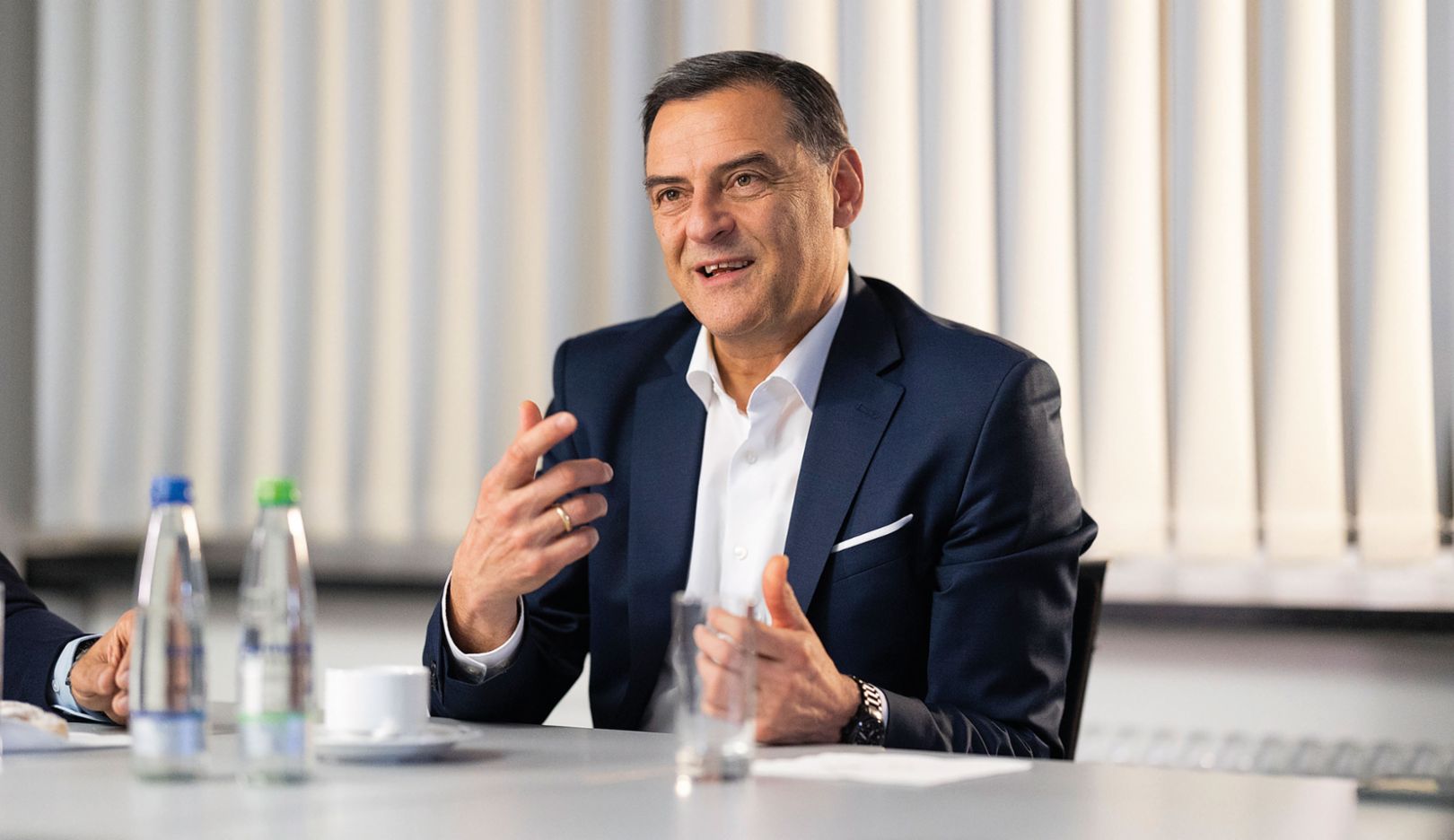
Micheal Steiner
has held managerial positions at Porsche AG since 2002. He has been responsible for the Research and Development division since 2016 and, since 2022, has also held responsibility for VW Group Research and Development.Which brings us to artificial intelligence. What issues are you currently focusing on here in particular?
Steiner: We can currently only guess what the possibilities here might be because AI is only just being established in a big way in other sectors. A key issue will be how our vehicles can understand people and make their lives even more agreeable. This will go way beyond voice assistants. Seeing which new differentiation possibilities we then create for the brand will be an interesting challenge. Here, too, one of the most important questions will be, as Sajjad Khan said, what the customers expect of Porsche. This doesn’t necessarily have to be what’s currently technically feasible.
Khan: It’s often the case that the technical possibilities don’t present themselves in the vehicle first, but in other smart IoT devices. We then need to consider whether they make sense in a car, too, and will lead to customer expectations relatively quickly. And we always see such systems as an additional offering. Anyone who doesn’t want them can deactivate them and can continue to enjoy their Porsche in unadulterated form.
The two of you share office space at the Weissach Development Center. Is this indicative of the degree to which your Executive Board divisions are intertwined?
Steiner: It means we are often able to discuss things, which inspires both of us. There are no areas within my division that don’t achieve their results through close coordination with areas that are overseen by Sajjad Khan. In the end, there is one product for the customers that we develop synergistically.
Khan: I absolutely concur. And I am especially delighted to have such an experienced colleague at my side. Not only does Michael Steiner have outstanding technical knowledge – he is also very familiar with the corporate and Group structures. So I always approach him if I have a question. We get to our goals more quickly together.
Mr. Khan, you haven’t been with Porsche for all that long. What does the brand mean to you personally?
Khan: The shortest answer to that consists of three digits. When I was asked what company car I would like, I knew right away – a 911 Turbo S. For me, the 911 remains the emotional core of the Porsche brand.
Consumption data
911 Turbo S
Macan Electric
-
19.4 – 16.8 kWh/100 km
-
0 g/km
-
A Class
Taycan Turbo S
-
19.9 – 17.8 kWh/100 km
-
0 g/km
-
A Class
